#placoderms
Text
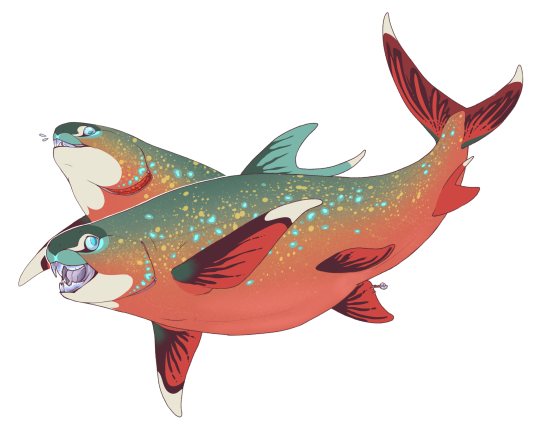
dunk design for a pal
based on brook trout
4K notes
·
View notes
Text
Do you think the coelacanth suffers from survivor's guilt
Is that why he hid for so long
He didn't know how to go on without those who were left behind
#biology#fish#coelacanth#placoderms#beautiful beautiful placoderms too good for this world#devonian#prehistoryposting
451 notes
·
View notes
Text

Dunkleosteus (I could not find A SINGLE DRAWING of it with it's mouth closed which made this a little tricky)
116 notes
·
View notes
Photo




Prehistoric Reef Cam Footage: Field Notes
A series of Horizontal Baited Remote Underwater Video Stations (H-BRUVS) were lowered into the sea over the Late Devonian Canning Basin reef system, in what is now the Kimberley region of Western Australia. The purpose of this research study was to understand grouping and trophic interactions within the Canning Basin Biota. Screenshots of the footage from the third camera (file name HBRUVS_Cann_03.mp4) are shown here to present some select interactions observed during the day's recording session. The BRUVS was baited with chopped Bothriolepis.
Slide 1: After being lowered into the water at 10am, the bait bag draws a small group of Mimipiscis toombsi that begin to feed on the bait. Placoderms Rolfosteus canningensis and Camuropiscis laidlawi are observed swimming among the stromatoporoid corals, seeming disinterested in the bait bag. Acuticryphops trilobites are visible on the seafloor and ammonites (likely Ponticeras sp.) swim slowly suspended in the water column.
Slide 2: The bait bag has drawn a larger group of Mimipiscis, the gathering has been disrupted by the presence of Mcnamaraspis kaprios. The placoderm is larger and has a stronger bite than the Mimipiscis, and claims feeding privileges while they keep their distance. Materpiscis attenboroughi is briefly visible in the lower left of the frame, and slowly drifted along the sand before disappearing off frame. One Rolfosteus individual continues to swim around the stromatoporoids.
Slide 3: The feeding session is interrupted by a large Eastmanosteus calliaspis as it attacks the bait bag, startling the Mimipiscis and Mcnamaraspis into fleeing. This was the only Eastmanosteus individual observed in the week since beginning video surveys, and their usual habitat is still unknown. A dramatic and exciting encounter for the team upon rewatching today's footage.
Slide 4: This slide is indicative of the rest of the footage until the thirds BRUVS was recovered at 17:00. With the bait bag torn off by the Eastmanosteus, no further fish were drawn to the camera and activity in the area was limited. This slide does, however, show a rare sighting of the predatory Onychodus jandemarrai toward the background, likely hunting. Materpiscis is visible sheltered at the base of the reef, and the small saltwater lungfish Rhinodipterus kimberleyensis can also be seen.
Field notes for future reference:
- Use heavier weights on the BRUVS to prevent motion
- Investigate use of a metal cage or canister instead of the net bag, as the bag is evidently not strong enough to withstand an attack by the largest predators of the area
#paleoart#paleontology#prehistoric#fossils#gogo formation#placoderms#reef#marine biology#trail cam footage#my art#palaeoblr
2K notes
·
View notes
Text
History Giants: Titanichthys clarki

Ti. clarki is among the largest known placoderms we have fossil record off, remains of their jaws, skull and shield bones are found scattered but some complete specimens offer a complete view of this peculiar and possible first large filter feeding vertebrate from the late devonian. AMNH 7315 or AMNH FF 7134 (IDK why the different ID from Engelman reference) represent one of the biggest known specimens recovered alongside the Moroccan Ti. termieri, having a head length of 75 cm and extended flat a breadth of 1.4 meters.

Engelman paper on Dunkleosteus body calculation used the measurements of this specimen alongside the smaller but quite complete CMNH 5768 implementing OOL giving on both specimens a body size of 3.7 and 4.15 meters respectively, making this one of the few placoderms that can rivalice in length to Dunkleosteus.
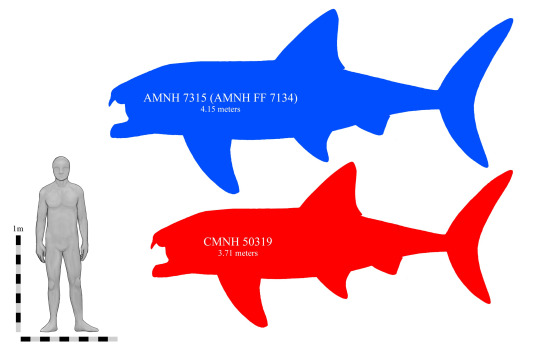
Reconstructing Titanichthys
If you are wondering about some details on this reconstruction looking this way, proportions, shape of the head and the strange "fang" on the front that lacks many recons is because I spend some time trying to check how to reconstruct properly this armored fish, which ended up with this skeletal reconstruction
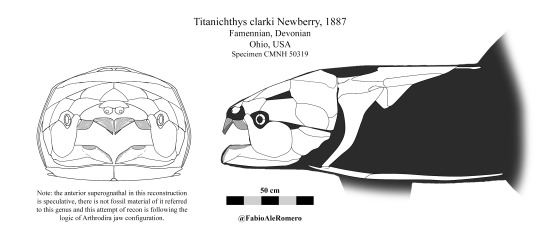
This already comes from what I tried to do several months ago with the need to properly reconstruct this placoderm since the available figures and references seem not to expose several elements, even those that we do know exist which are not often highlighted in the paper skeletal reconstructions. in this case the base of everything is mostly from CMNH 50319, perhaps one of the most complete Titanichthys with material described online (scale bar 1 m)
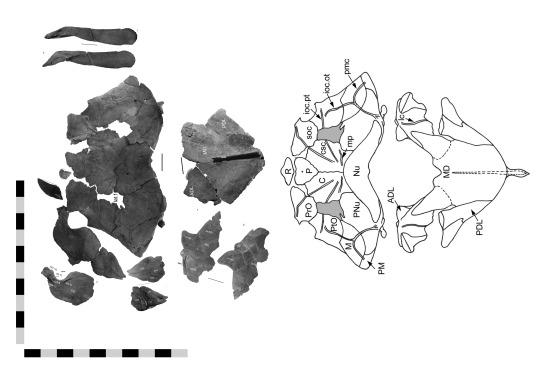
I was not just comfy about doing this reconstruction based only in sketches, so instead on assuming proportions by digital sketches in a 2D way, I spend few weeks working my way into blender and modeling each pieces I did build a basic model from most of the bone that forms the whole skull and thoracic shield bones, the model for the moment is not available anywhere, and I don't think I could share it online for the moment.

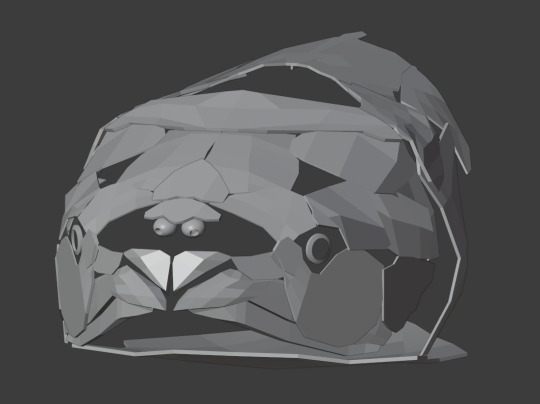
Every minor thing that is not know is being filled with other of its relatives such as Bungartius and Tafilalichthys, both species the most close relatives on few cladistic trees. Unlike the filter feeder, these two are known to might have been hard prey eaters, they are relatively more complete and better preserved so they work out as a reference base being one of the most useful aspects the lacking elements of the jaw.
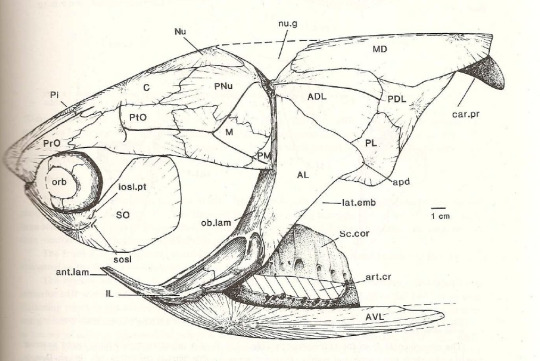

Probably is important to remark a lot of mounts that are used as references are pretty incomplete in the front, with also the lower jaw being backwards, the extreme of the jaws should be touching in V shape and the notch probably was filled with cartilage called a meckel's cartilage.
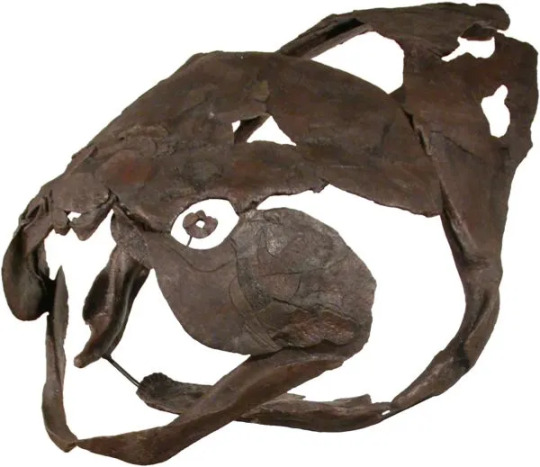

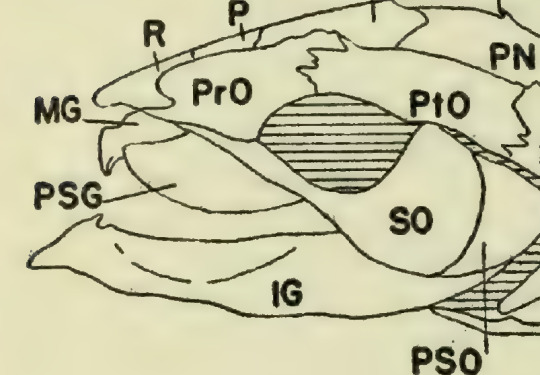

In general picking Bungartius as a sample the upper jaw possess the complete set of superognathal plates, the upper jaw bones that exist on all placoderms, in many species vary in size and shape, which even Titanichthys there is some evidence of a Posterior Supergnathal Plate along the complete specimen (PSG, see above), but not the Anterior (MG or ASG), inferring from the position of both supergnathal and the articulation of the cheek bone where the inferognathal fits, this hypothetically could mark how these bones configurated in the skull.
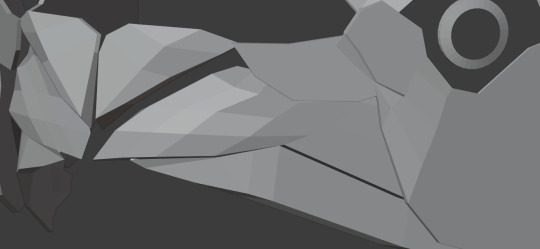
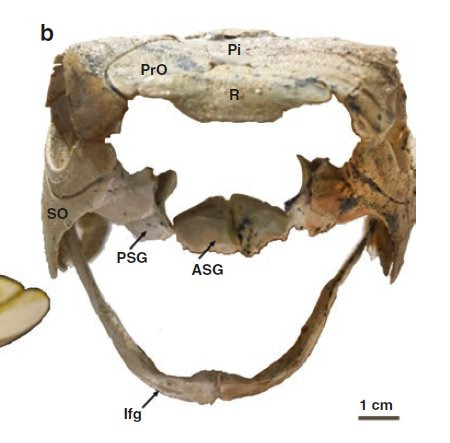
Eye with this, my reconstruction is speculative, based on how these bones articulates on other specimens, new evidence and more material could provide a more accurate conclusion.

Compared to Dunkleosteus is amazing that level of diversity these reached on the last days of the Devonian, both belonging to two totally different radiations of Arthrodira they grew to become the giants of their time, though currently with this body reconstruction Dunk remains very robust on body shape compared to the more compact shaped Titan.

BTW for those curious how it would look like with its jaw closed.
94 notes
·
View notes
Note
hello what is your favourite placodermi
Dang, fossil placoderms are a bit of a gap in my paleo knowledge. I'd have to default to Dunkleosteus because its shearing jaw plates being direct extensions of its skull is absolutely metal.
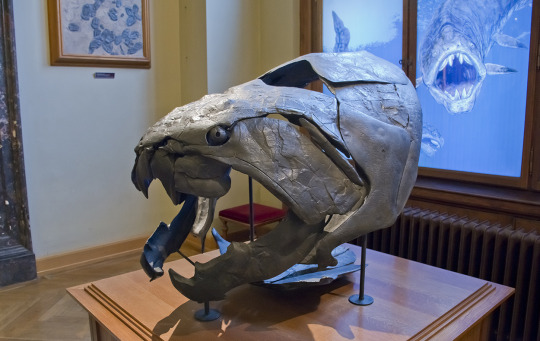
I'm also a big fan of Sacabambaspis, which while not a placoderm, is still an interesting early fish species from the Ordovician. It looks so alien when compared to more modern fish groups.
I just also think the name is funny because Sacabambaspis sounds like a very technical and elaborate species descriptor, but it literally just means "Fish from Sacabamba."

#paleontology#dunkleosteus#sacabambaspis#placoderms#ordovician#devonian#Dunky has meat cleavers growing right out of it's skull#Sacabambaspis is just a little guy
21 notes
·
View notes
Text

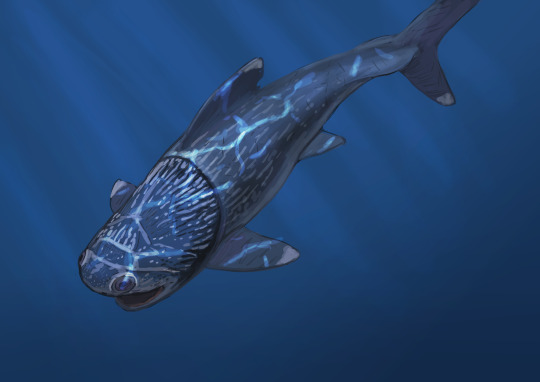

The amount of interesting research about placoderms in recent years gives me life.
They are such goobers.

Dunkleostes, Amazichthys, Alienacanthus and Entelognathus
3K notes
·
View notes
Text
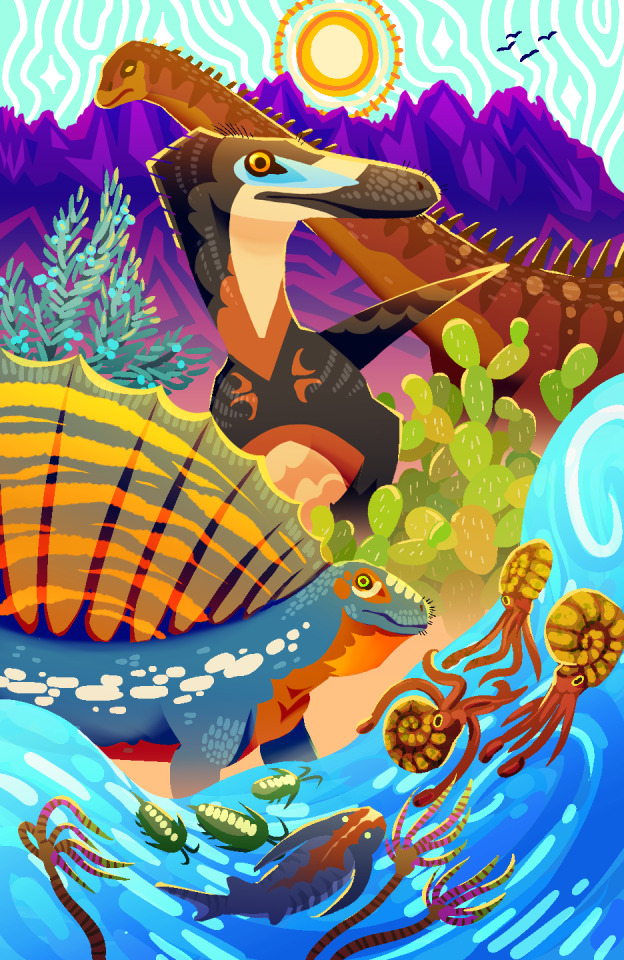
piece i submitted for a public art exhibit last month but it wasnt accepted
#i still like it thouhg#paleo#paleoart#coelophysis#diplodocus#edaphosaurus#placoderm#trilobite#ammonite#rorys art
3K notes
·
View notes
Text

Quick sketch of Dunkleosteus terreli.
#paleontology#paleoblr#paleoart#dunkleosteus#placoderm#digital drawing#digital art#digital illustration#sciart#from davey jones locker
569 notes
·
View notes
Note
What is the best fish, and why is it Dunkleosteus?
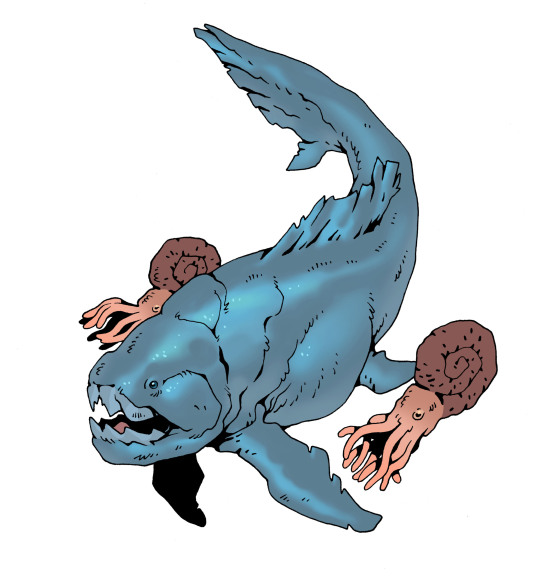
Because everything about it is perfect.
Old dunk drawings below the break:



573 notes
·
View notes
Text

Konstantin Korobov (Russian, 1985) - Fish (2023)
#konstantin korobov#art#painting#dunkleosteus#fish#prehistoric fish#devonian#arthrodira#placoderm#the dunk
435 notes
·
View notes
Text
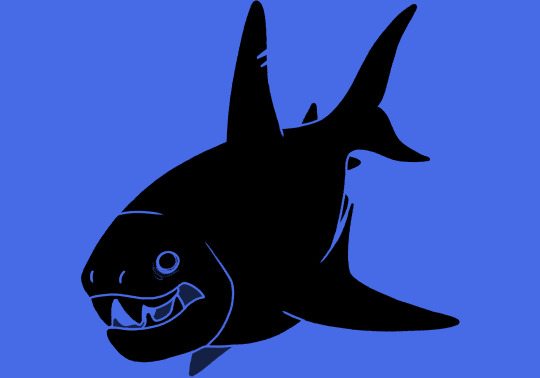

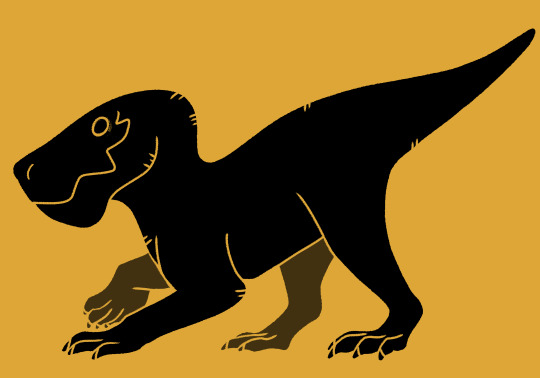
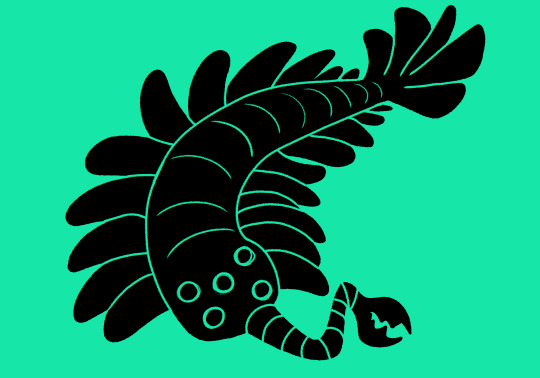
PALEOART BE UPON YE
shown here are dunkleosteus, gastornis, inostrancevia and opabinia!
#dunkleosteus#chunkleosteus#paleoart#paleontology#gastornis#opabinia#inostrancevia#gorgonopsid#gorgonops#dinosaur#bird#terror duck#natural history#fish#placoderm#silhouettes#animal art#creature art#extinct animals#extinct#sombertide art
994 notes
·
View notes
Text
Alienacanthus hunting Dunkleosteus
results of my little stream! today i drew Alienacanthus hunting a baby Dunkleosteus
thank you once more to everyone who joined and shared your unique personality with the vibe, as always it's a pleasure knowing my followerbase is full of so many cool people
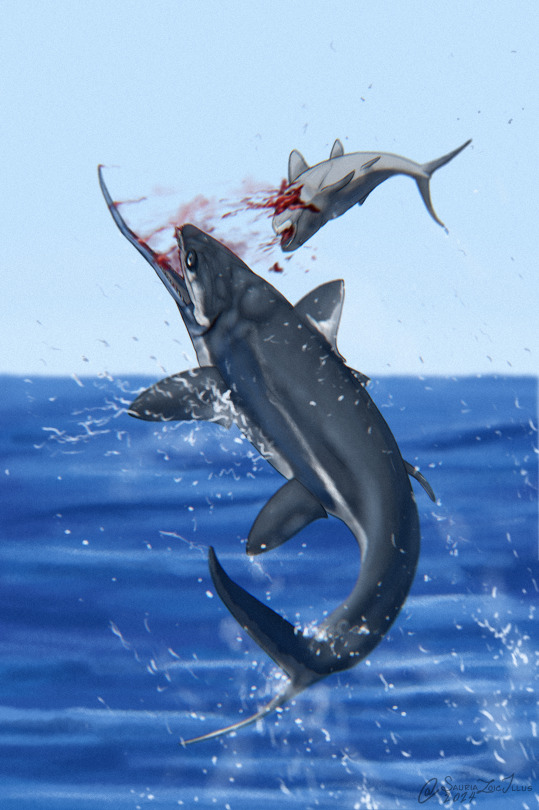
#paleoart#paleontology#digital art#artists on tumblr#digital artwork#palaeoart#digital illustration#sciart#id in alt text#placoderm#fish art#extinct fish#extinct fish art#Dunkleosteus#Alienacanthus
234 notes
·
View notes
Text
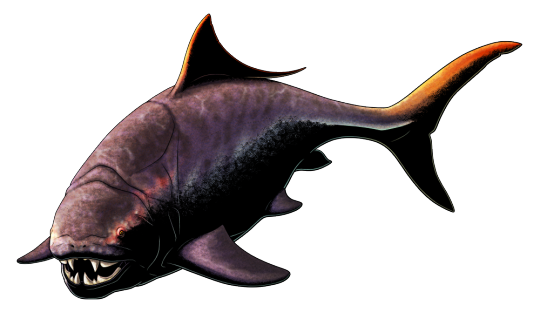
With its armored head and blade-like jaws, the placoderm fish Dunkleosteus terrelli is an iconic Paleozoic animal.
Living during the Late Devonian, about 375-359 million years ago, in subtropical waters covering parts of what are now North America and Europe, this species is known mostly just from the bony plates that covered its head and thorax. The rest of its skeleton was cartilaginous and rarely ever fossilized (only a few vertebrae and the pectoral fin are currently known), so its full body shape and size is poorly understood, and previous length estimates have ranged all the way up to 10m (33').
…Except it turns out it wasn't nearly that big.
Based on its head proportions, along with comparisons to more complete remains of other arthrodire placoderms, recent studies instead come up with a maximum length of about 4m (~13ft) – giving Dunkleosteus a much shorter-but-heavier chunky body shape, more like a tuna than a shark.
But even after this size revision Dunkleosteus would have still been one of the largest animals around at the time, with the ability to snap its jaws open at high speed and an incredibly strong bite force. It was probably specialized to mainly prey on other heavily-armored animals such as other placoderms and shelled cephalopods, and was likely a strong swimmer with a shark-like tail fin.
Preserved stomach contents in one fossil show remains of the fast-swimming cartilaginous fish Orodus – suggesting that much like the modern tuna it resembled, Dunkleosteus was also capable of bursts of high speed.
———
NixIllustration.com | Tumblr | Twitter | Patreon
#science illustration#paleontology#paleoart#palaeoblr#dunkleosteus#dunkleosteidae#arthrodire#placoderm#fish#art#chunkleosteus#big chonk#a very shaped animal#gotta go fast
890 notes
·
View notes
Text
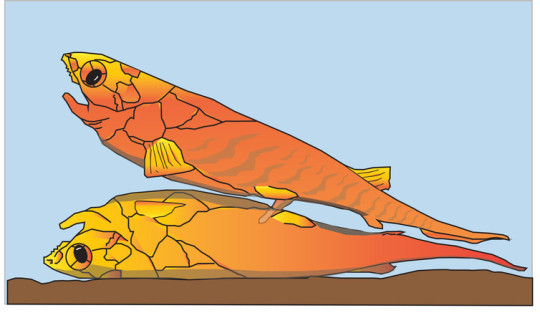
So I was reading about placoderms (as one does) and in one article I found this scientific diagram of them mating and… why do they look like this? Why do they look so surprised and concerned? Did someone just walk in on them? But also they look like they don‘t know what the fuck is happening to them? They really look like this is an accident and they don’t know how to stop. If they told me that they slipped and fell I would believe them
Those were the first vertebrates to ever have sex and the artist really wanted to make sure that that was obvious.
330 notes
·
View notes
Photo

Dunkleosteus? More like Chunkleosteus!
#my art#dunkleosteus#chunk#fish#placoderm#Kieran#those new size estimates are something else#They squish the fish
534 notes
·
View notes